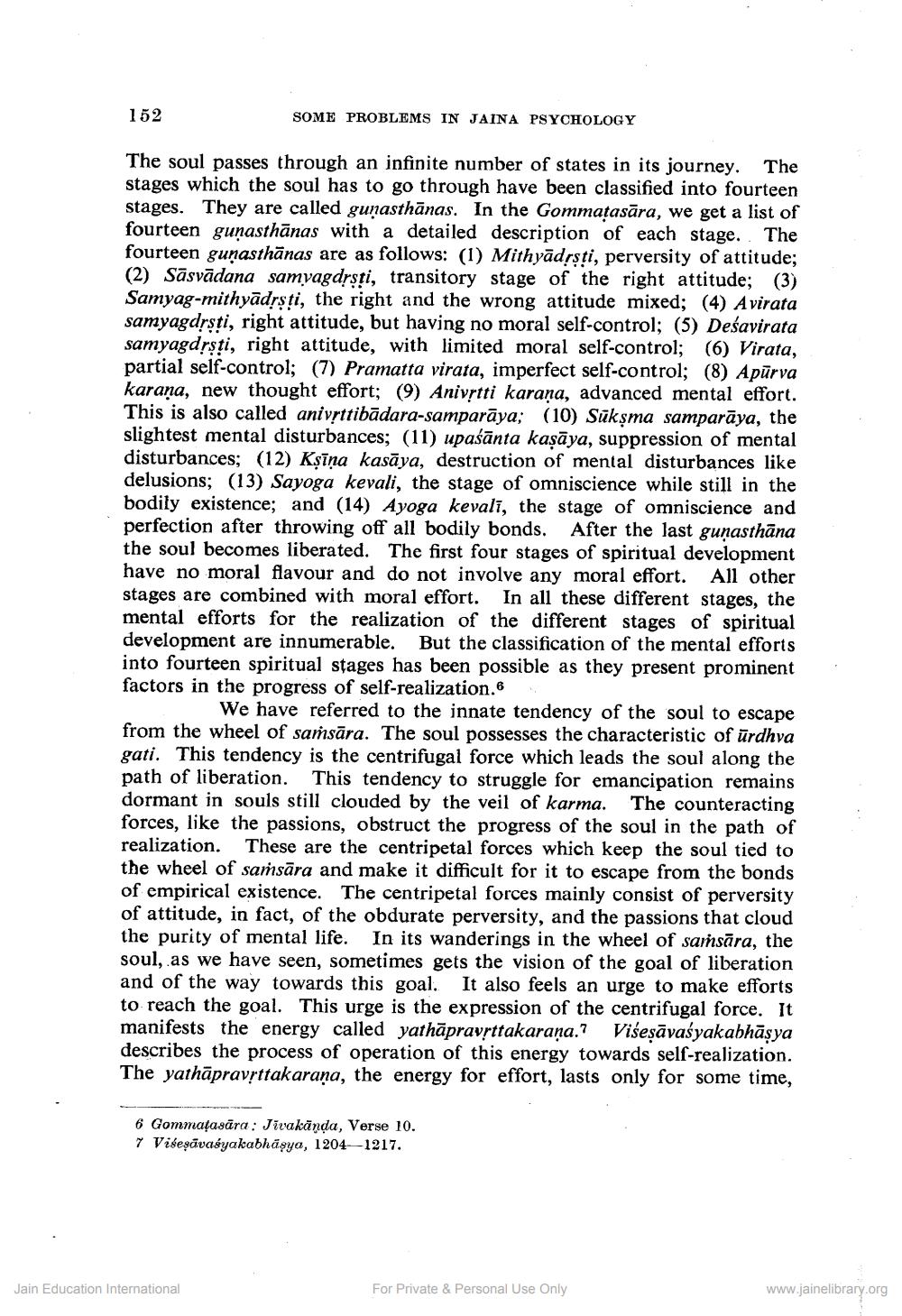________________
152
SOME PROBLEMS IN JAINA PSYCHOLOGY
The soul passes through an infinite number of states in its journey. The stages which the soul has to go through have been classified into fourteen stages. They are called gunasthānas. In the Gommatasāra, we get a list of fourteen gunasthānas with a detailed description of each stage. The fourteen gunasthānas are as follows: (1) Mithyādrsti, perversity of attitude; (2) Sāsvādana samvagdrsti, transitory stage of the right attitude; (3) Samyag-mithyādrsti, the right and the wrong attitude mixed; (4) Avirata samyagdrsti, right attitude, but having no moral self-control; (5) Deśavirata samyagdrsti, right attitude, with limited moral self-control; (6) Virata, partial self-control; (7) Pramatta virata, imperfect self-control; (8) Apūrva karana, new thought effort; (9) Anivștti karana, advanced mental effort. This is also called anivrttibādara-samparāya; (10) Sūksma samparāya, the slightest mental disturbances; (11) upaśānta kaşāya, suppression of mental disturbances; (12) Kșīņa kasāya, destruction of mental disturbances like delusions; (13) Sayoga kevali, the stage of omniscience while still in the bodily existence; and (14) Ayoga kevali, the stage of omniscience and perfection after throwing off all bodily bonds. After the last guṇasthāna the soul becomes liberated. The first four stages of spiritual development have no moral flavour and do not involve any moral effort. All other stages are combined with moral effort. In all these different stages, the mental efforts for the realization of the different stages of spiritual development are innumerable. But the classification of the mental efforts into fourteen spiritual stages has been possible as they present prominent factors in the progress of self-realization.
We have referred to the innate tendency of the soul to escape from the wheel of saṁsāra. The soul possesses the characteristic of urdhva gati. This tendency is the centrifugal force which leads the soul along the path of liberation. This tendency to struggle for emancipation remains dormant in souls still clouded by the veil of karma. The counteracting forces, like the passions, obstruct the progress of the soul in the path of realization. These are the centripetal forces which keep the soul tied to the wheel of saṁsāra and make it difficult for it to escape from the bonds of empirical existence. The centripetal forces mainly consist of perversity of attitude, in fact, of the obdurate perversity, and the passions that cloud the purity of mental life. In its wanderings in the wheel of saṁsāra, the soul, as we have seen, sometimes gets the vision of the goal of liberation and of the way towards this goal. It also feels an urge to make efforts to reach the goal. This urge is the expression of the centrifugal force. It manifests the energy called yathāpravsttakarana.? Višeşāvaśyakabhāsya describes the process of operation of this energy towards self-realization. The yathāpravrttakaraṇa, the energy for effort, lasts only for some time,
6 Gommațasāra: Jivakända, Verse 10. 7 Vibeşāvasyakabhāsya, 1204—1217.
Jain Education International
For Private & Personal Use Only
www.jainelibrary.org




